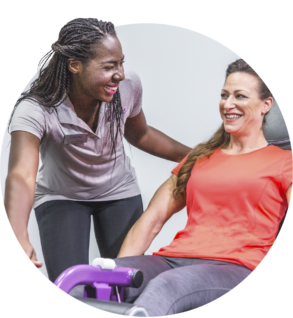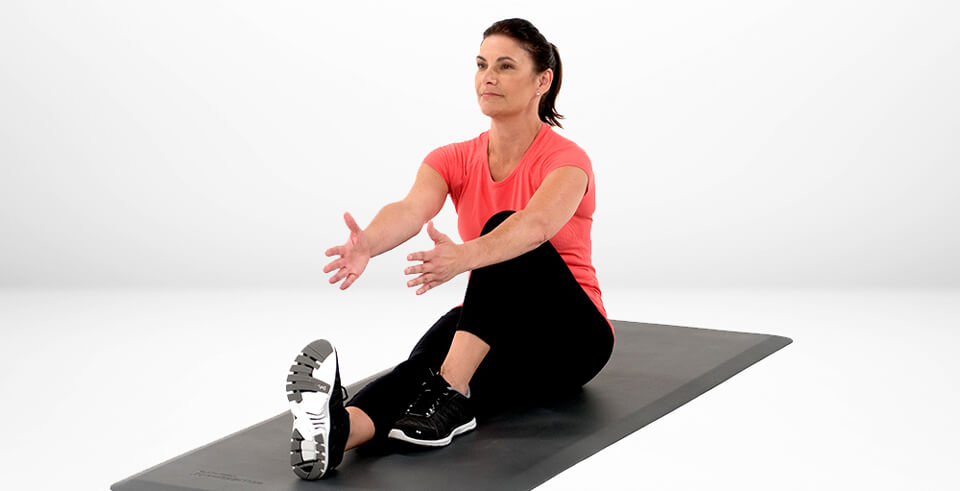The Benefits of Stretching
Whether you plan to do Curves circuit training or walking, stretching is of universal importance to a safe and healthy workout routine for women. In fact, stretching can be beneficial in our everyday lives, even when we’re not engaged in a purposeful full body workout. Here are some interesting facts about stretching that you might find useful.
The difference between static stretching and dynamic stretching
A stretch is a stretch is a stretch, right? Not exactly. The stretches associated with a workout plan that we normally think of – like when we extend a particular muscle to our limit and hold it for 30 seconds – is a static stretch. Dynamic stretching is a whole different ballgame. It is where you slowly and gradually move through a series of motions that warm up your body for your gym workout by raising your heart rate and sending more blood to your muscles.
When should you do static stretches?
Contrary to what we used to believe, doing static stretches before a whole body workout does not improve muscle performance. In fact, in some instances it can actually inhibit performance. You should instead stretch at the end of a workout to help improve flexibility and cool your body down. Static stretches can also be helpful when they are not associated with exercise or on “off” days when you will not be participating in your regular workout plan. Before stretching on your off days, make sure to warm up your muscles with a few minutes of walking to get the most out of your stretches.
When should you do dynamic stretches?
Although you may not have called them by this name, chances are you’ve been doing dynamic stretches for most of your life. Dynamic stretches are nothing more than warming up before exercise. They are designed to put your body through the same motions as your full body workout, but at a slower rate, gradually increasing in intensity. For example, Curves workouts incorporate dynamic stretching alongside strength and cardio during the warm-up and cool-down for a well-rounded workout plan. Some dynamic stretches that can be done in between the machines as a warm-up would be:
• Hip Circles: Stand with your feet hip-distance apart. Shift your weight on to one foot. Lift the other foot a few inches off the ground. Pretend your big toe is a pencil and draw a big circle on the ground by extending your leg forward, to the side and behind you.
• Arm Circles: Stand with your feet shoulder distance apart. Bring your arms up to shoulder height at your sides. Move your arms in a circular motion to the front then to the back.
• High Knees: Begin with your feet hip distance apart with your elbows bent and held close to your sides. Your palms should be to the front. Lift your left knee as high as you can, striving to touch your palm. Lower your left leg and repeat on the opposite side.
Everyday stretching tips
Static stretches can sometimes help relieve muscle tightness or achiness after repetitive motion or a tough gym workout. For example, after you’ve been engaged in an activity that has kept you in the same position for a while – like weeding your garden or riding in a car – static stretches can reduce muscle tension and increase flexibility. Keep in mind stretching is particularly important if you’re exercising to maintain or lose weight over 40. In a recent study1, researchers found that regular muscular stretching, performed five times a week for four weeks, increases blood flow to the muscles of the lower leg in older people.
Be sure to do dynamic stretching before – and static stretching after – exercise of any type, whether you’re walking outside in nature or engaging in a full body workout at Curves. For instance, if you walk on off days, it’s important to warm up and cool down, just like you would do if you were exercising using workout equipment or doing a gym workout. The great thing about stretching is that it feels really good, so you’ll look forward to stretching before and after you exercise.
To find out more about how you can informed lifestyle and health choices, visit our blog under the ‘Live‘ category! You can also learn more about how the ‘Curves Circuit‘ can benefit your lifestyle here.






